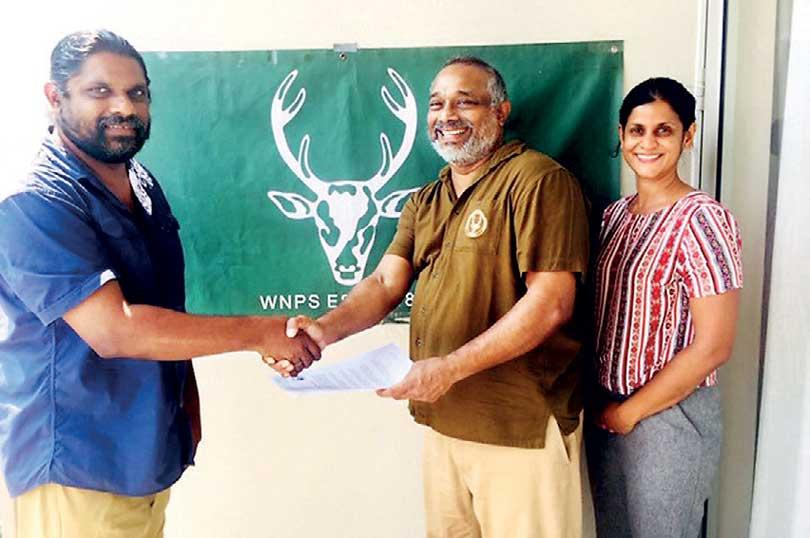14 May 2021 - {{hitsCtrl.values.hits}}

The picture depicts the General Secretary of the Society, Jehan CanagaRetna handing over the signed document of the MOU to the Chair of the Herpetological Foundation of Sri Lanka (HFS), Mendis Wickremasinghe. Dr. Chaturangi Wickramaratne of the Society’s newly formed Science for Conservation Sub- Committee is also seen in the picture.
The Wildlife and Nature Protection Society of Sri Lanka (WNPS)has signed a memorandum of understanding(MOU) with the Herpetological Foundation of Sri Lanka (HFS), in regards to a project which aims to help habitat conservationof Sri Lanka’s Knuckles World Heritage Site. Mr L. J. Mendis Wickramasinghe is an ecologist, herpetologist and well-known wildlife photographer. He formed the Herpetological Foundation of Sri Lanka (HFS) in 2007, to pursue independent research on Sri Lanka’s Herpetofauna (reptiles and amphibians of a particular region, habitat, or geological period) and also provide a platform for young herpetologists to initiate research. He is credited with the discovery of no less than 34 novel species.
This new project will comprise of three main components specifically Research, Education and Advocating Policy Planning, aligning well with WNP’s goal of biodiversity conservation through education, research and policy.The Knuckles Conservation Forest is part of Sri Lanka’s central highlands and part of the region considered to be a super biodiversity hotspot, comprising the Peak Wilderness Protected Area, the Horton Plains National Park and the Knuckles Conservation Forest.
These montane forests, where the mountains rise to 2,500 metres above sea-level, are home to an extraordinary range of flora and fauna, including several endangered species. The Knuckles landscape is home for 29 endemic species of fauna and flora, of which 23 are herpetofauna. Research indicates that there is a vast number of new species yet to be discovered! Most of the habitats of these species are under severe anthropogenic pressures. Because some may even be hyperendemic.
Any adverse effect which might change or destroy their habitats, might even result in complete extinction, hence these species are classified as threatened according to IUCN Red List criteria. Therefore, there is a great urgency to publish these species, in order to sustainably manage our ecosystems and conserve their habitats and biodiversity. The Society is funding the Herpetological Foundation of Sri Lanka (HFS) to help conduct the above research which spans several months, with the project results to be published in peer reviewed international scientific journals as well as WNPS’s Loris Magazine. The rights of the intellectual property arising from the MOU will be shared equally amongst both organisations.
Most of the habitats of these species are under severe anthropogenic pressures
26 Apr 2024 28 minute ago
26 Apr 2024 6 hours ago
26 Apr 2024 7 hours ago
25 Apr 2024 8 hours ago